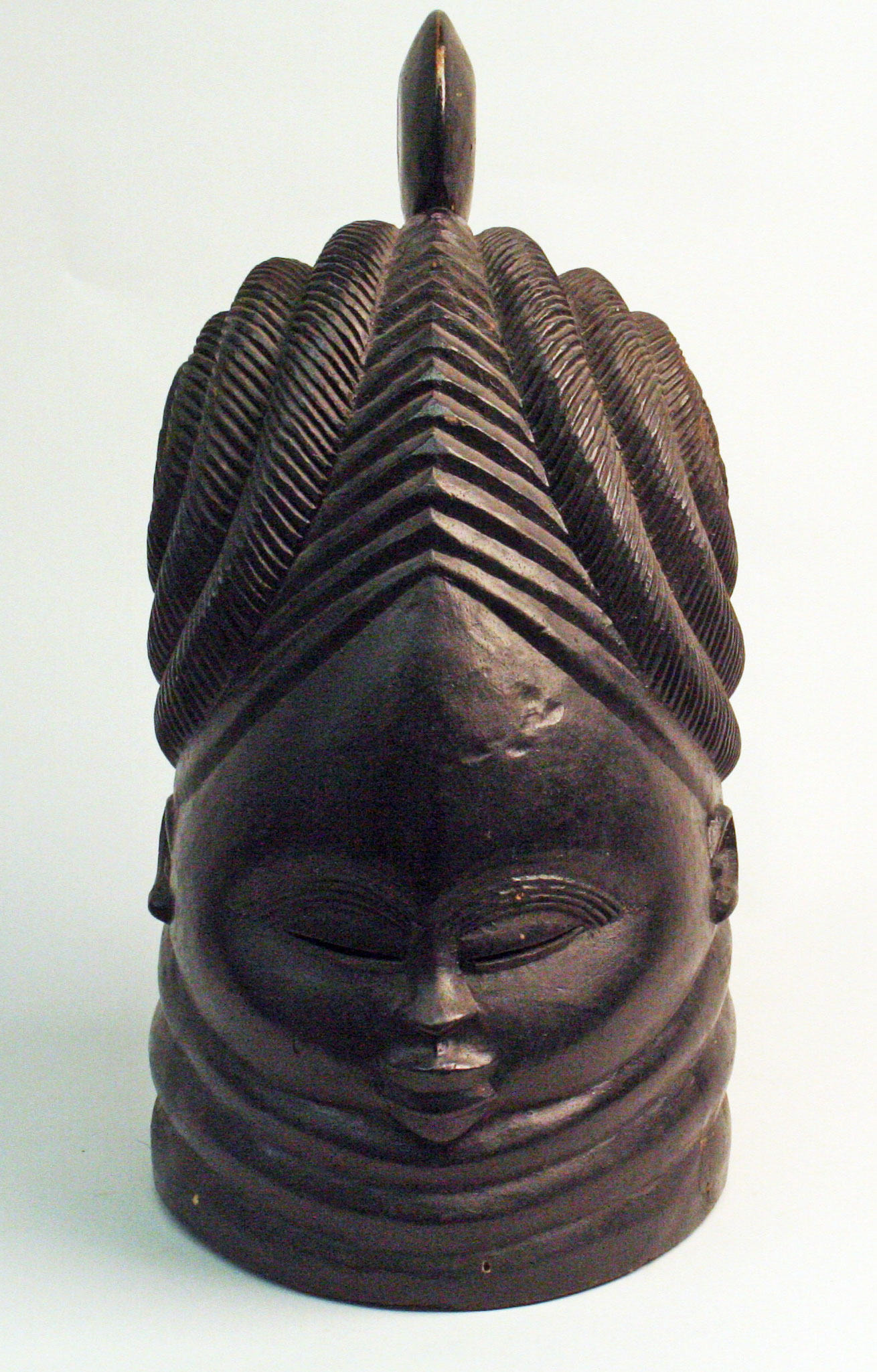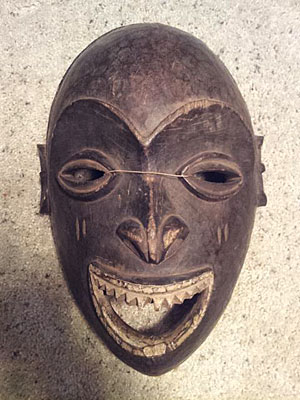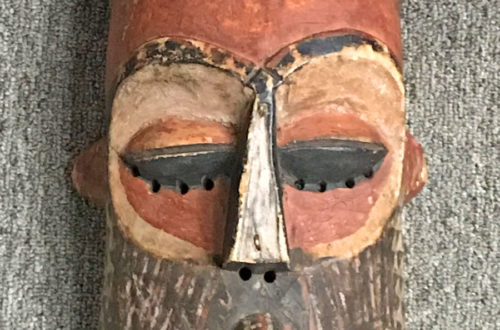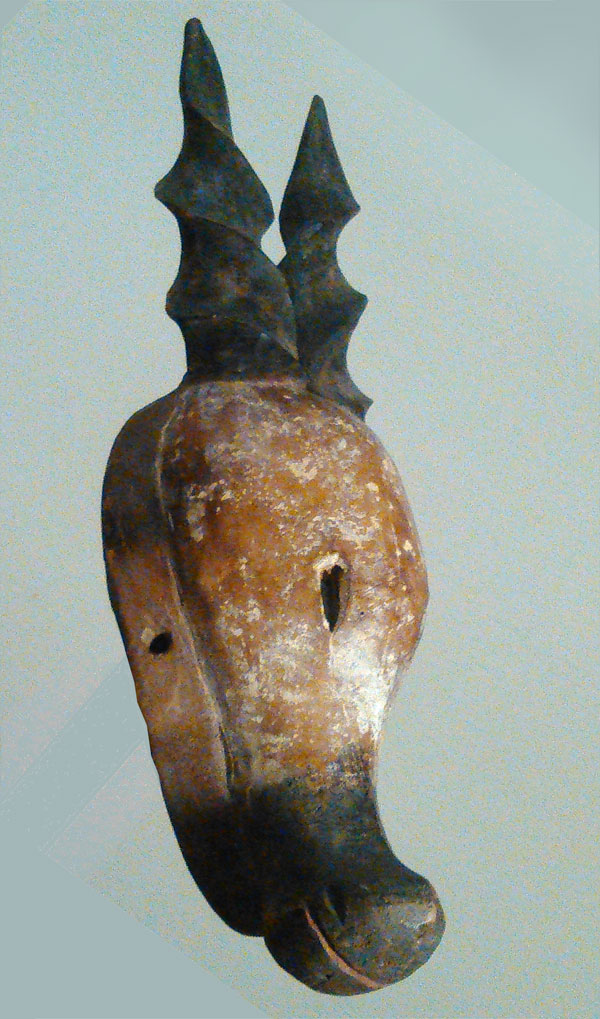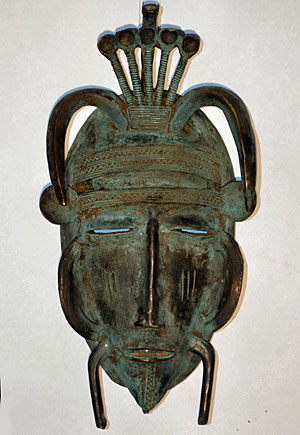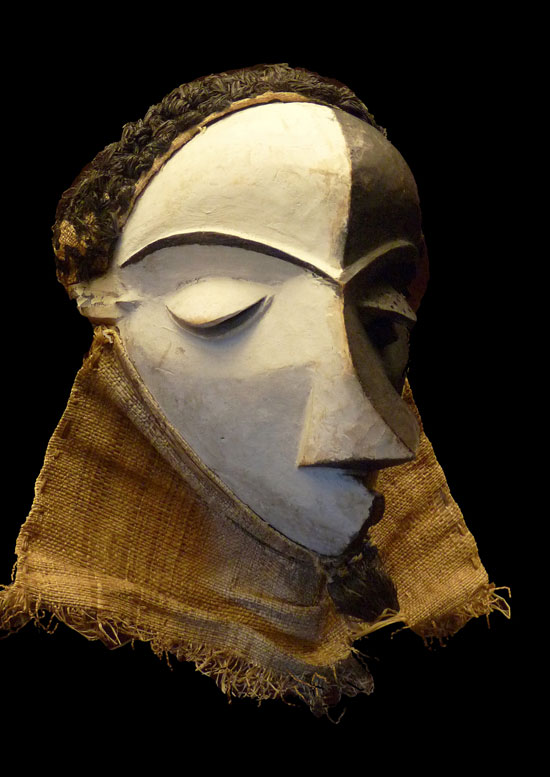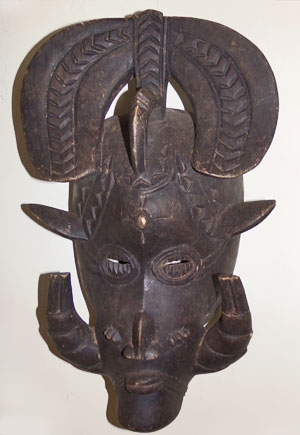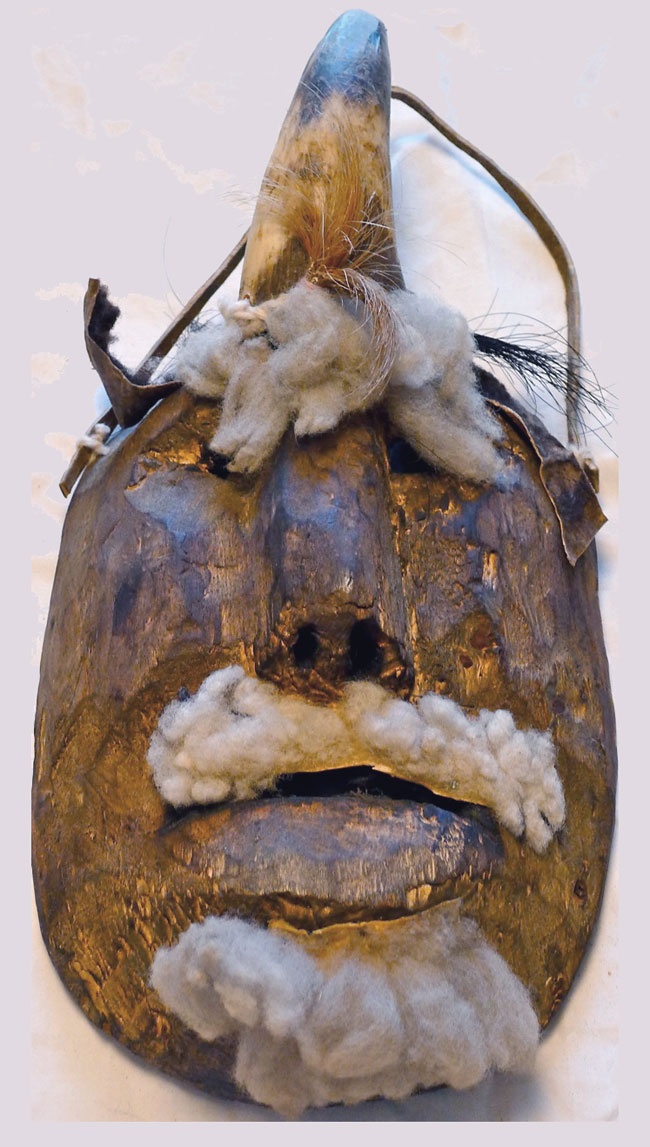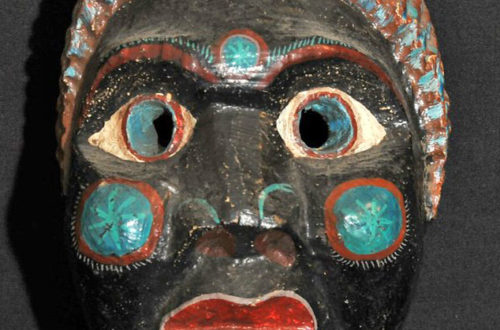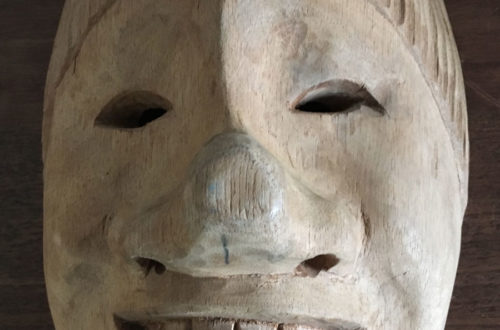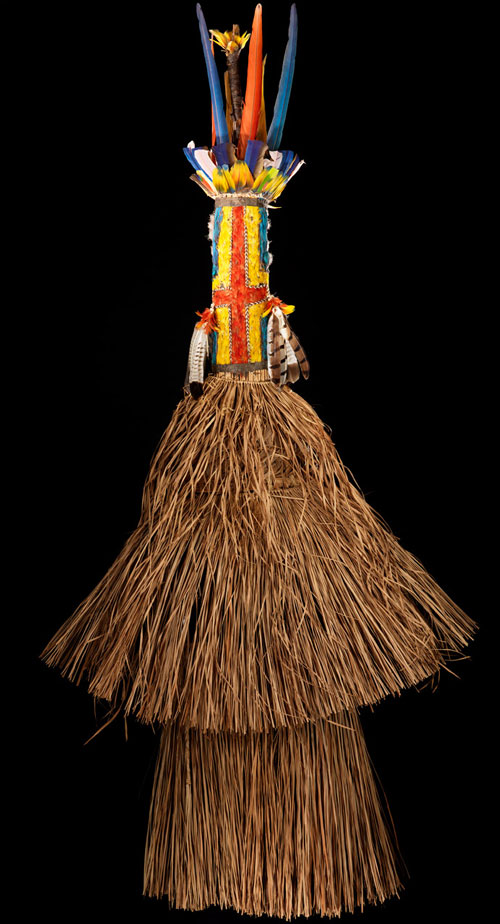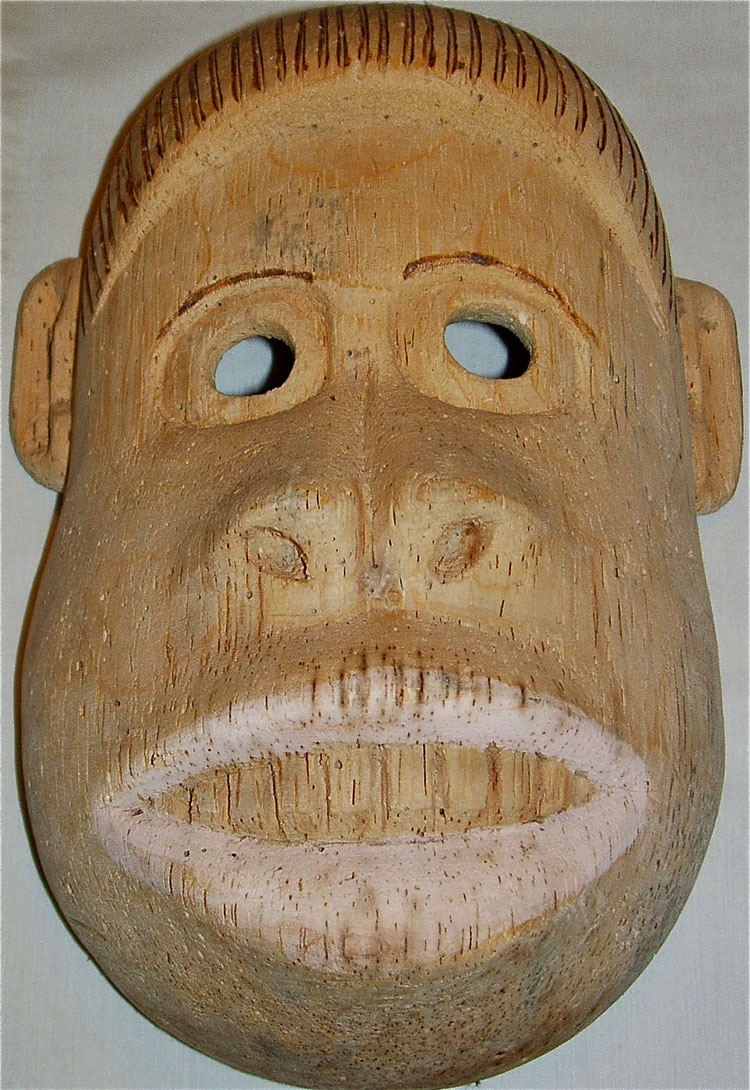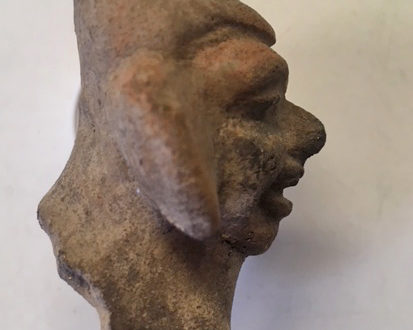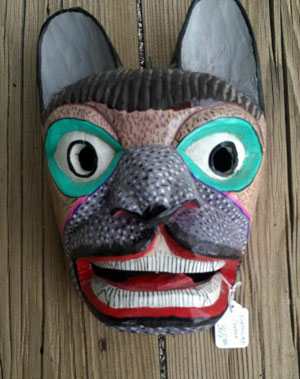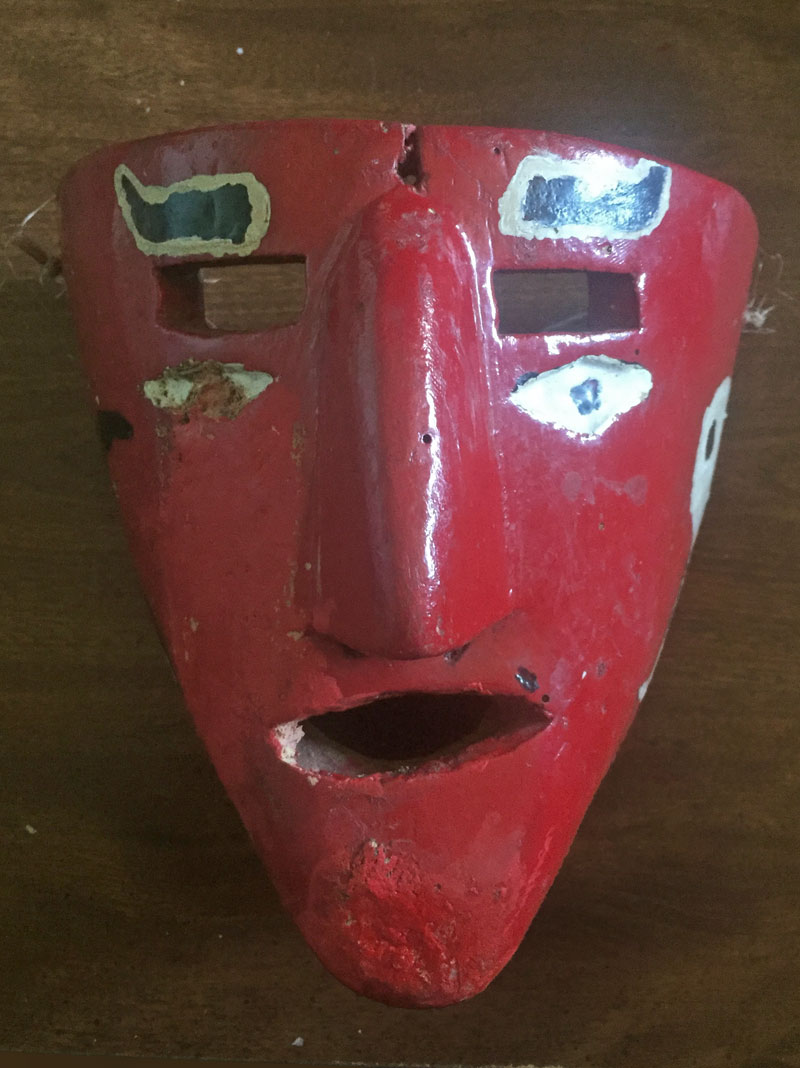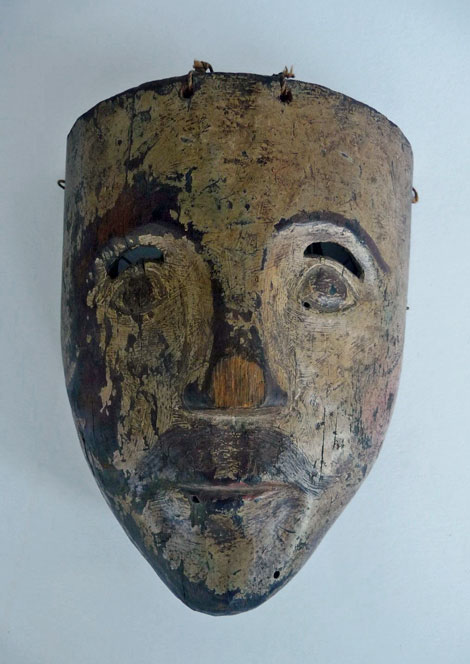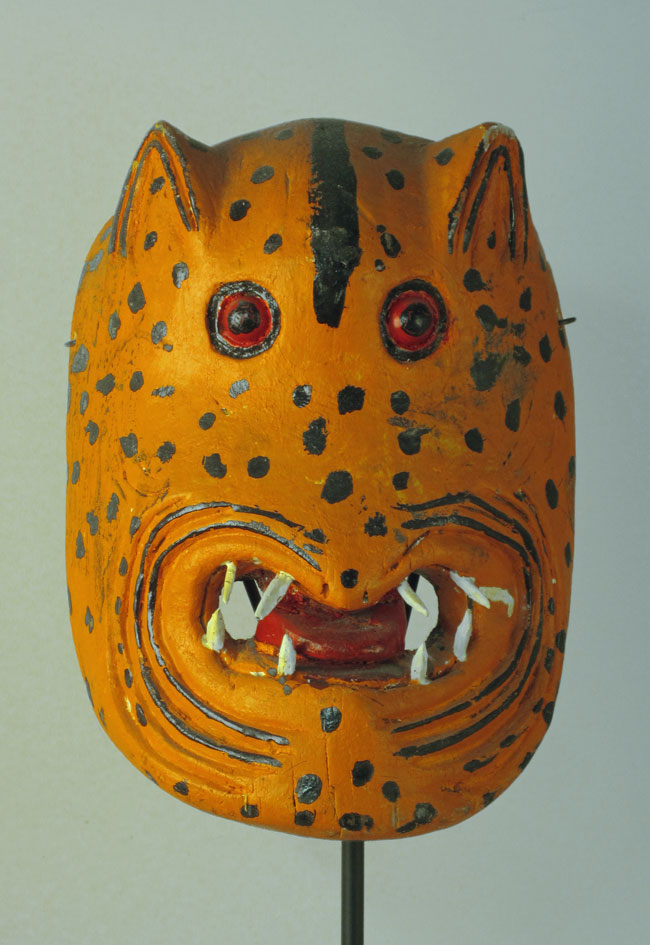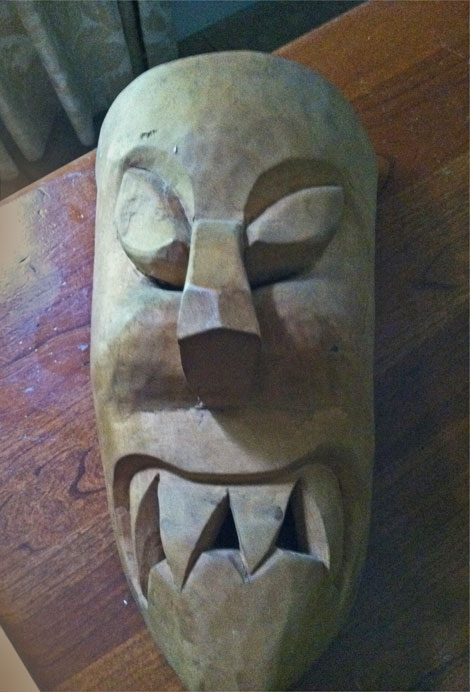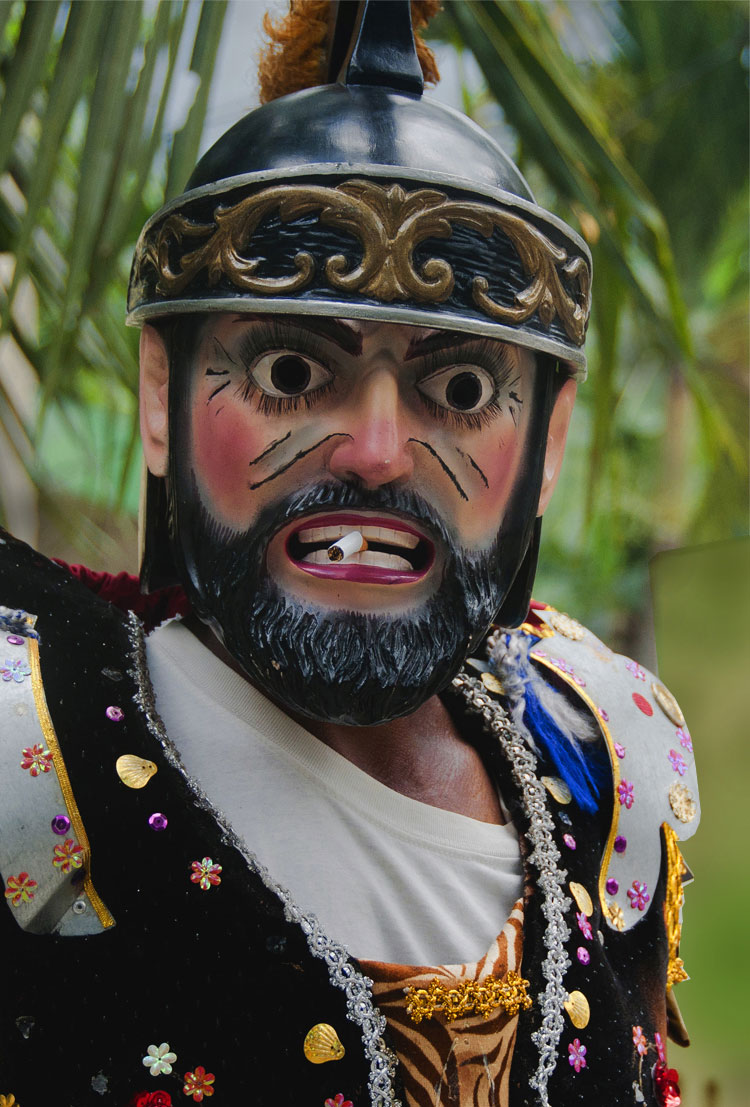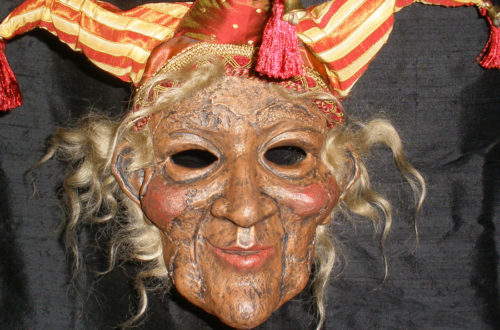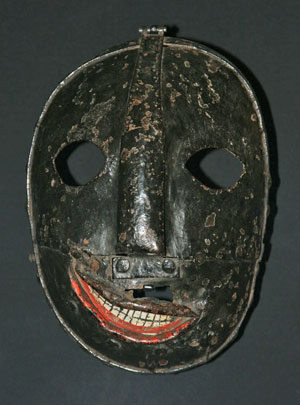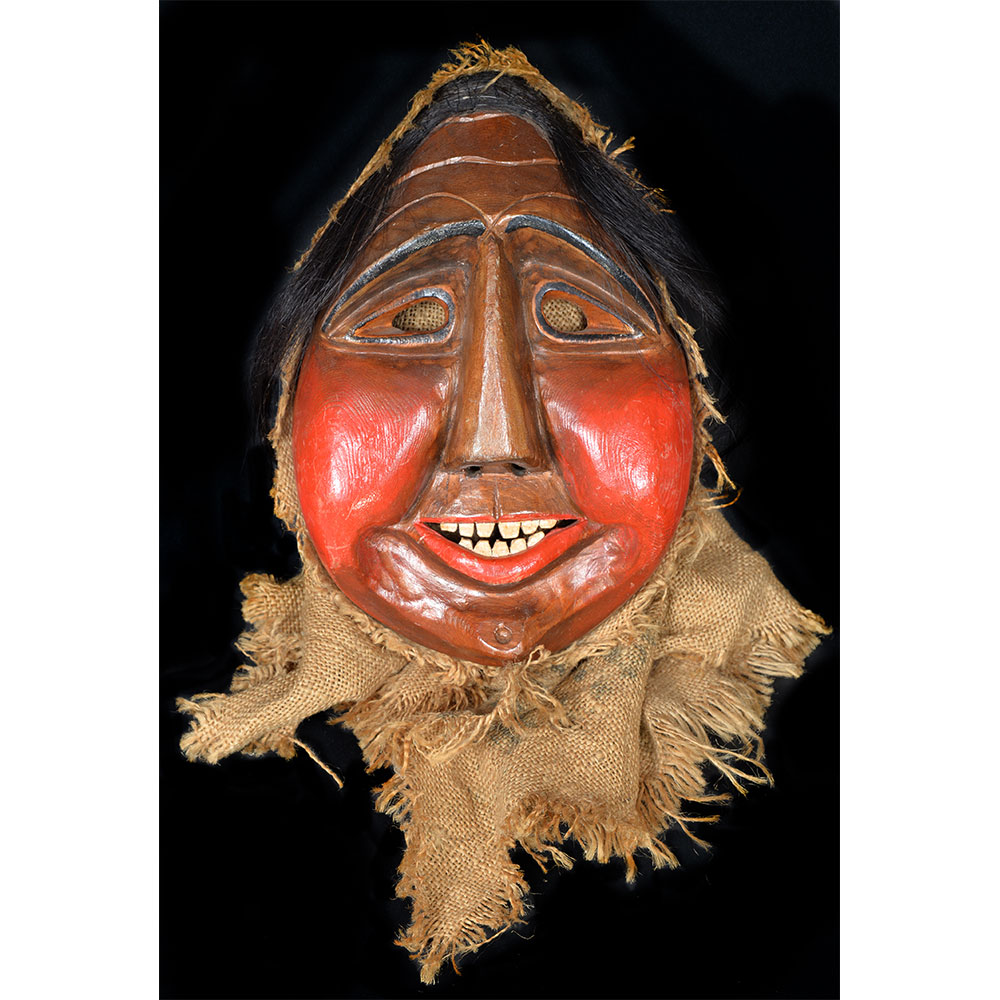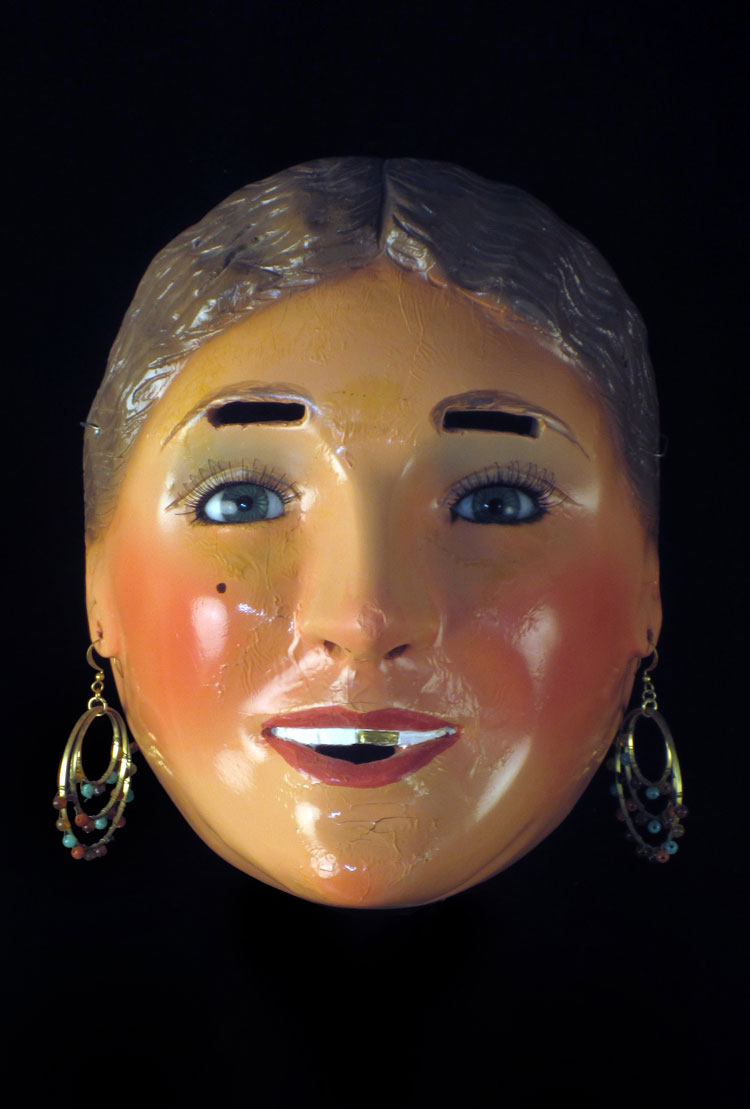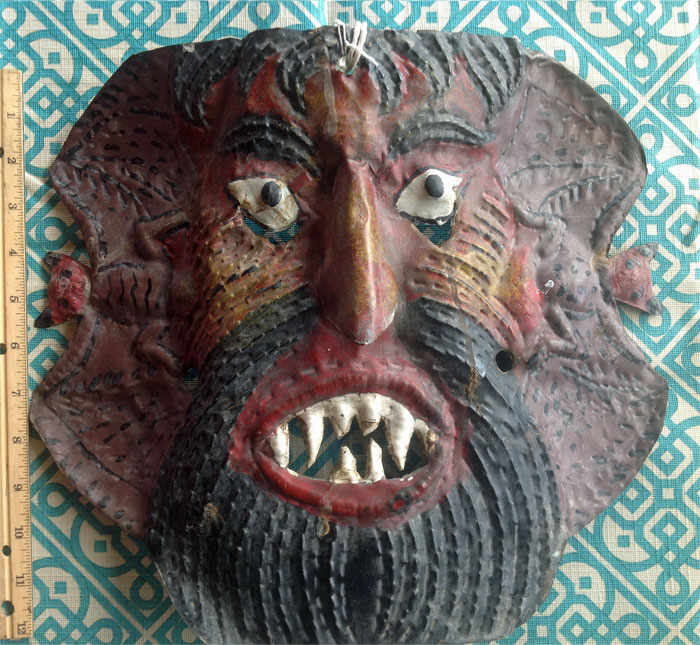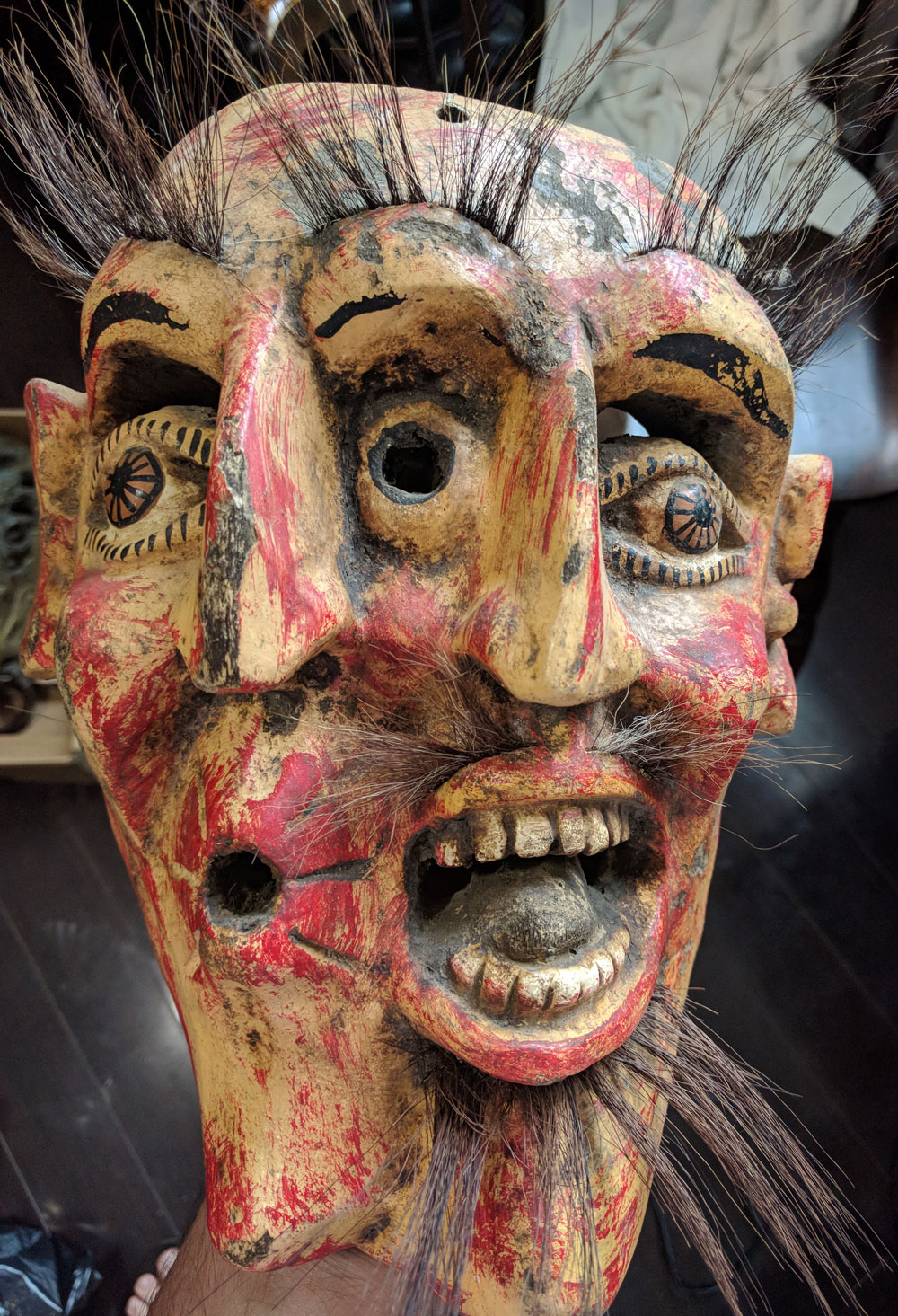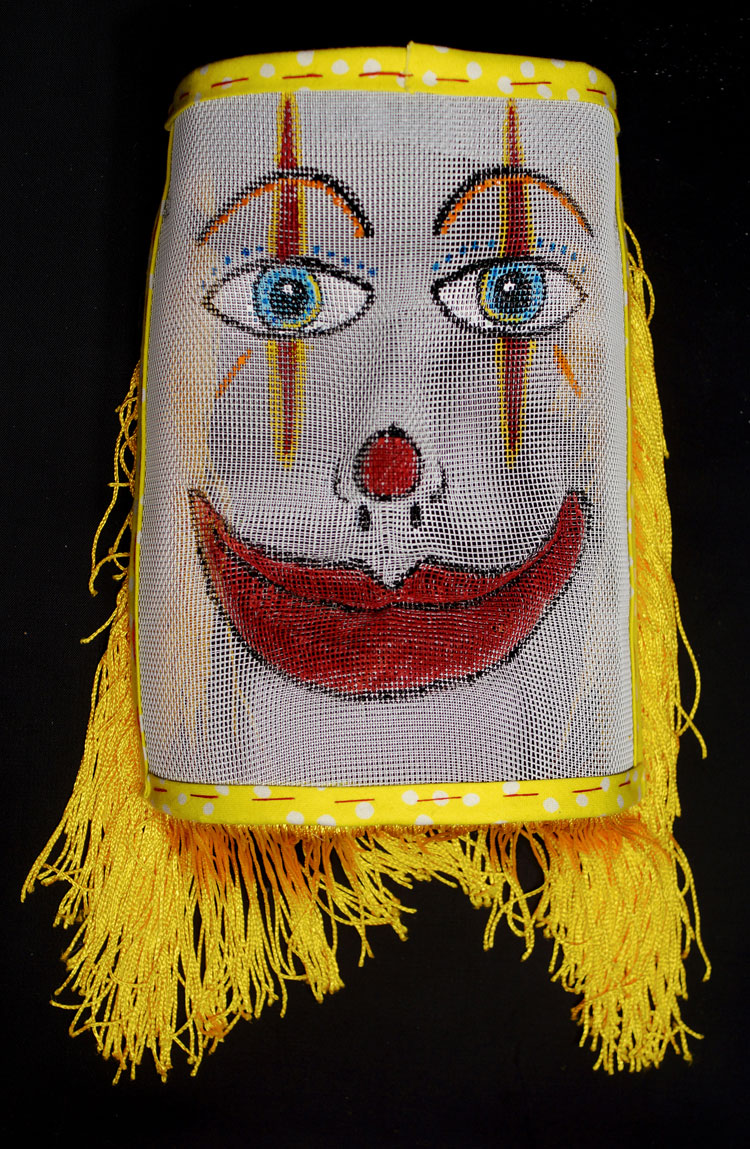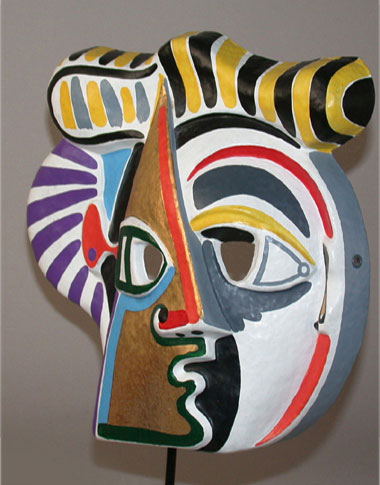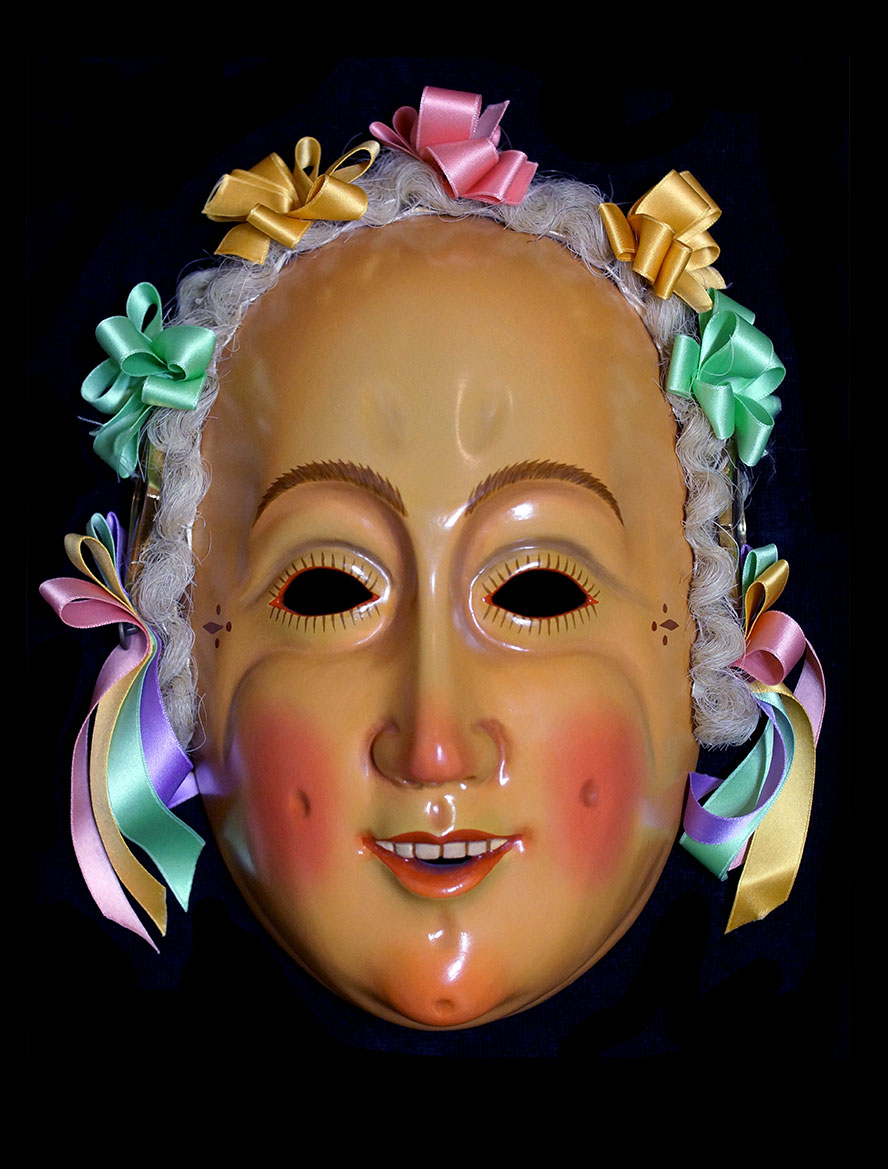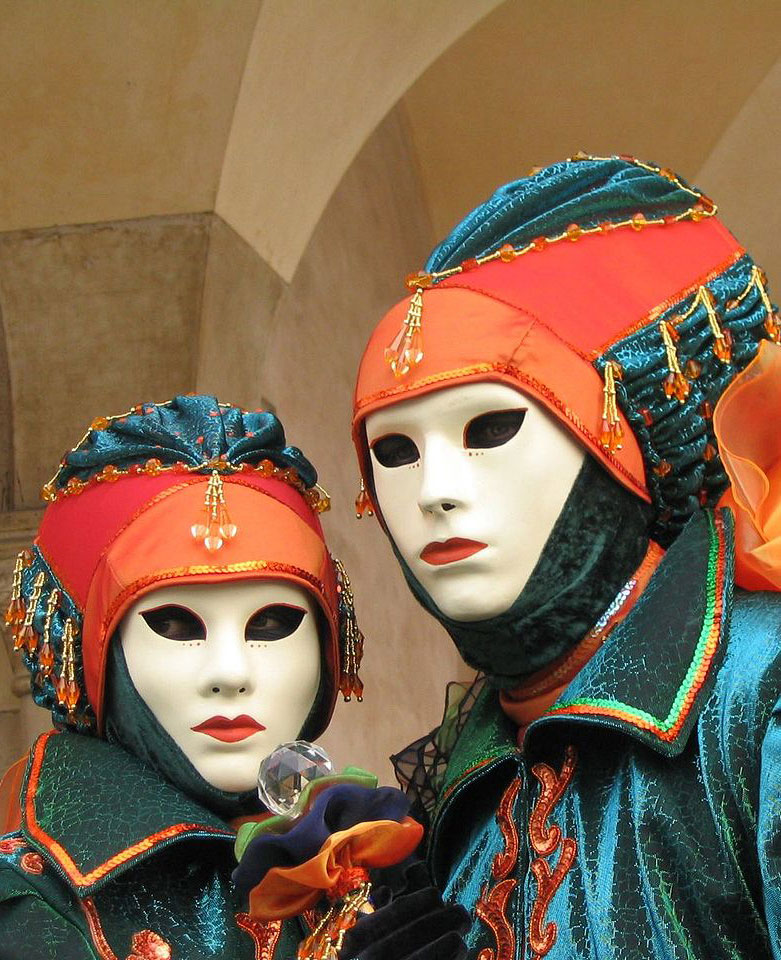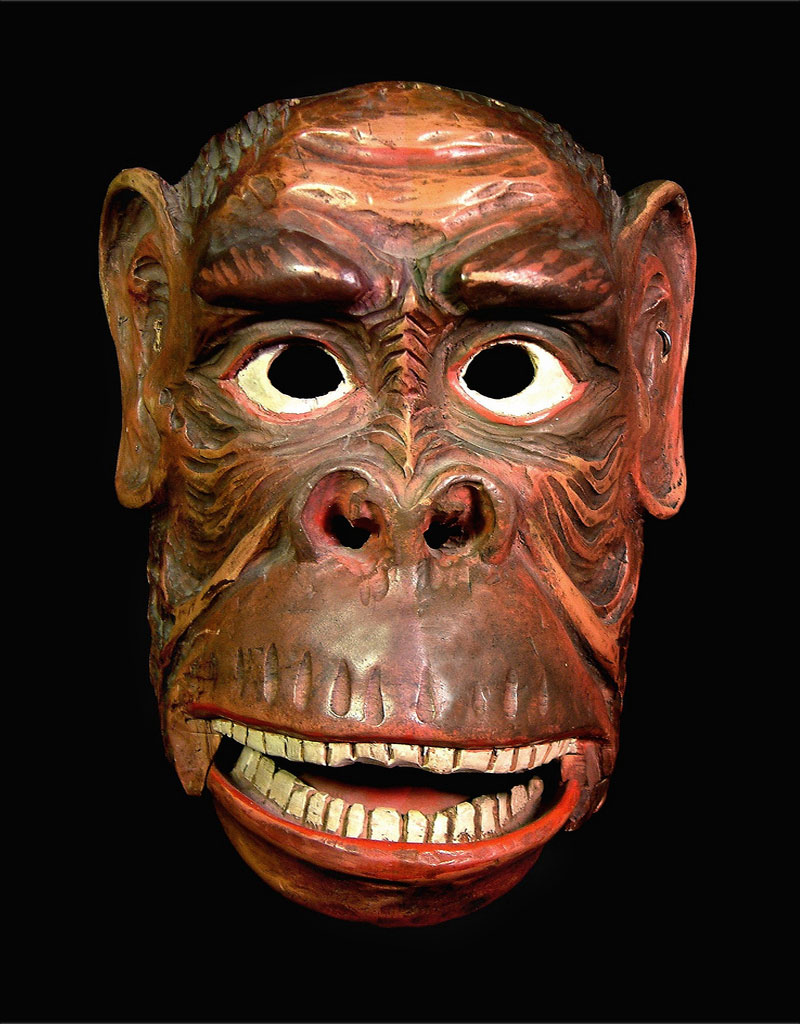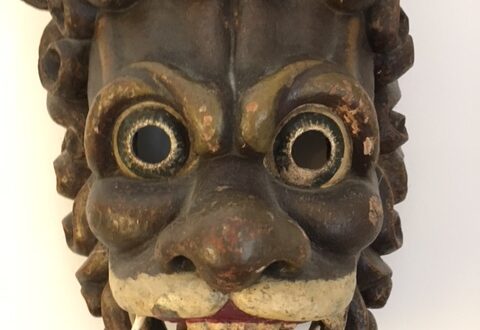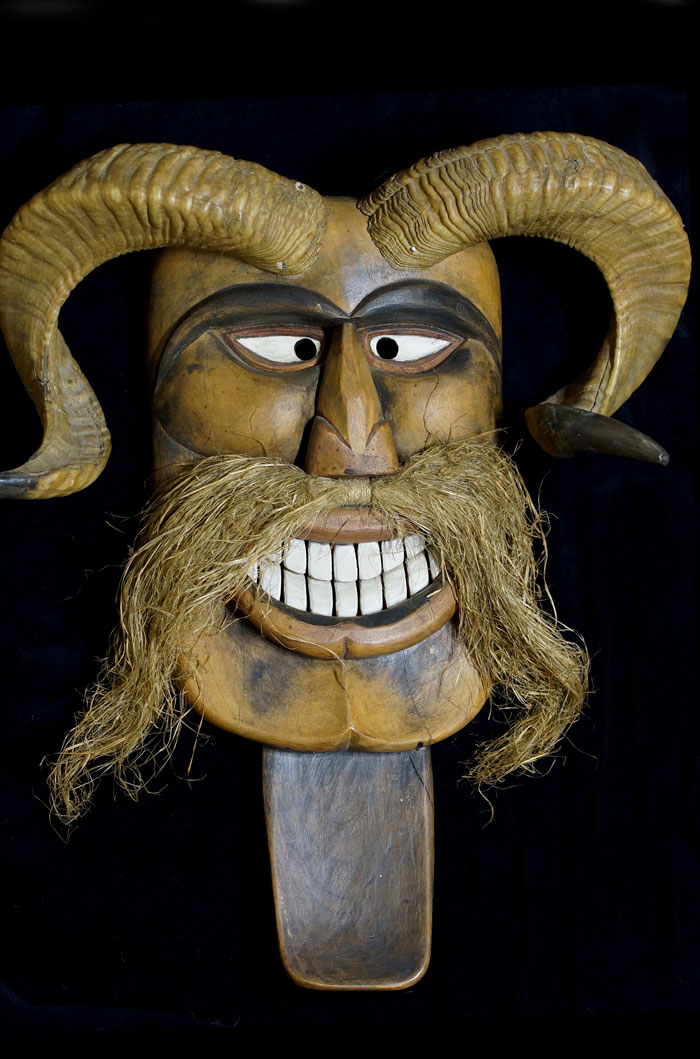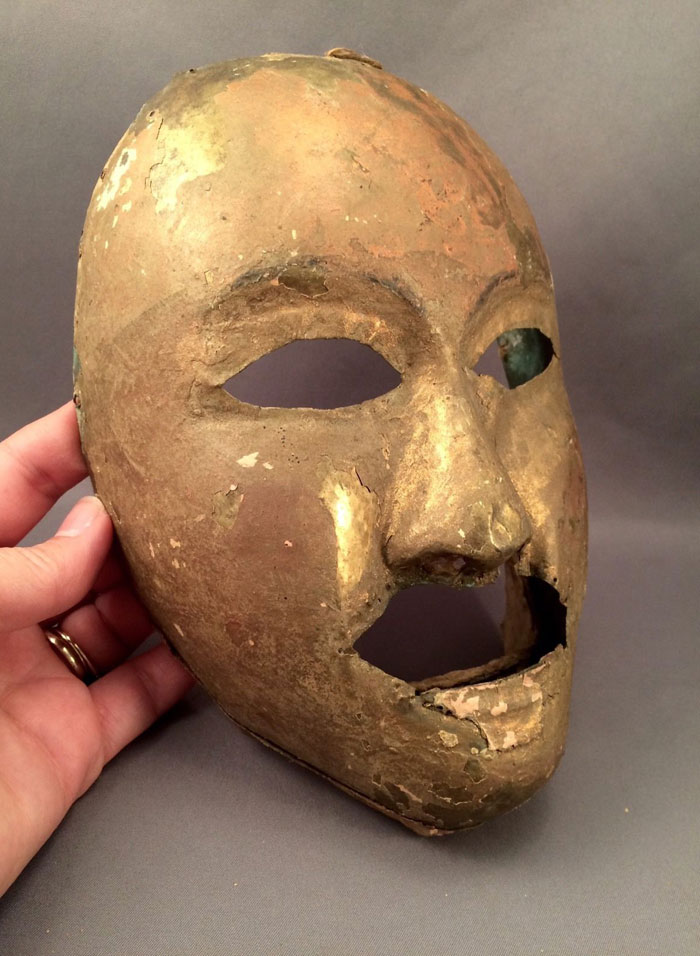The Sande Society prepares young women for adulthood in the Mende and Temne cultures of Sierra Leone. These black helmet masks that fit over the head and down to the shoulders are the only masks in Africa worn by women. These unique ceremonial masks are called Sowos and have voluminous neck-rings, very small faces, large heads, and all kinds of coiffures. But they can also have other things that are different, such as horns, abstract sculpture, different animals, and much more. There are plenty of female characters in African masquerade, but they are always portrayed by male dancers. I have seen collections of Sande Society masks that show an amazing…
-
-
Another Kwele mask from Gabon
Thank you very much Bob, you confirmed my suspicions about it. Also appreciate the addition of it to your website along with the mention of Kwele masks. I attached a picture of a mask I have. I do wish to get a more traditional looking one. There are ones covered in kaolin clay and flatter in shape, like the one you posted. Forest, 1140 A: Forest is referring to a recent post on March 24th which showed a much different Kwele antelope mask. This tribe makes quite a few versions of the Kwele. You can see more different ones on page 28 of Masks of the World by Ibold &…
-
Another mask from the Deep South
I normally post only one mask per person, however the previous South American mask from Paraguay is interesting in comparison to this one. Here we have one from the Mapuche people of south-central Chile. Both indigenous groups survived colonization of lower South America, but they are small populations in comparison to the Indian populations further north, so we don’t get to see their masks very often. 1139 Here is what Dean has to say about this Mapuche mask… Carved, plain, human/spirit; leather hanging thong & for the lips; has a horn tacked onto the forehead, along with 3 strips & brown horsehair; wool for the hair, mustache & goatee. 15…
-
Indian mask from South America
Q: In June I will be donating my Mataco & other art from Argentina, which includes the two fine masks from that region that I got from you. It might be best for folks if you posted the photo of this mask because it seems that these plain wood masks are what they are making these days in Paraguay. As I mentioned in my e-mail of today, the Chaco area is the region from which I’ll next be donating my art, which is currently on display in our dining room. I picked for you this mask because it’s pretty rare and interesting. Dean, 1138 A: When the Europeans settled in…
-
Old, used Mexican mask
Q: I picked this mask up in a little shop in Juarez Mexico City. The seller said that it was authentic. On each cheek there is half of a yin yang. Not what I typically think of for Central America. The eye hole placements look right for a Mexican mask though, there seems to be signs of wear, there’s a nose hole, and it’s been visibly repaired. To me, all signs of authenticity. I asked the seller to write down anything she knew. She wrote “Mascava del año 1940” and “Estado de Veracruz”. The mystery gets better due to the fact that the original owners name was written on the…
-
There’s an Easter surprise in the Philippines.
Just south of Luzon on the island of Maranduque there are Roman Catholics who celebrate the death and resurrection with realistic masks and costumes. Called the Morones Festival, it’s quite a pageant and not something you would expect to see in the South Pacific or anywhere else in Asia. It celebrates the Holy Week Festivities to the fullest with parades, processions and other activities. As in the Spanish Colonial traditions, many of the participants are costumed as Jewish followers of Jesus and the ruling Romans. Morones means army helmet in Spanish. The Morones Festival was started in 1807 by a Jesuit priest from Mexico. This Mexican folk play re-enacts the…
-
All of Mexico goes nuts at Carnaval Time
It’s an official holiday that begins a five-day celebration before the Catholic lent begins on Ash Wednesday. We’re talking about food, drink, parades, costumes, music and dancing in the streets. This particular mask represents a pretty woman called a Mujer and she is from the state of Tlaxcala. The carved-wood mask has glass eyes with lids that move, real jewelry and a gold tooth. She would be portrayed by a boy who could make the Mujer wink at the Paraueros and Charros with whom the young boy/woman is dancing. It’s very similar to the Catrine masks that also come from Tlaxcala. And there are hundreds of different looking masks being…
-
Mardi Gras goes back to 1699.
A French-Canadian explorer first brought the carnival customs, then Creole society began masking and dancing at private balls while revelers in disguise roamed the streets of New Orleans. Mardi Gras is also celebrated in many of the Cajun communities scattered throughout much of Louisiana, USA. These bizarre masks made out of window screen and other cheap materials are used by the locals even in the small villages close to the swamps. The masks and costumes are pure American folk art. Wild and crazy antics, much different than what happens at the parade in New Orleans, are practiced on this famous holiday by the rural Cajuns. Mardi Gras has some other…
-
Carnival time in Venice is the ultimate.
Italy’s biggest carnival inspires some of the most lavish costumes and masks. These simple white masks are not supposed to distract from the lavish costumes. It’s said that the Carnival of Venice was started from a victory of a small war in the year 1162. After that it went in and out of popularity. After a long absence, the Carnival returned in 1979. The Italian government decided to bring back the history and culture of Venice, and sought to use the traditional Carnival as the centerpiece of its efforts. The re-development of the masks began as the pursuit of some Venetian college students for the tourist trade. Since then, approximately…
-
Busos scare away Winter in Hungary.
Thought you hated the cold weather? The terrifying Hungarian festival where revelers don grotesque masks to scare off winter is a sight to behold. Mohacs Busok (Mask-people from Mohacs town) The Busojaras (Hungarian, meaning “Buso-walking”) is an annual celebration of the Croatians living in the town of Mohacs, Hungary, held at the end of the Carnival season and ending the day before Ash Wednesday. The Busó festivities are a six-day carnival in late February that involves a lot of activities, including a children’s costume contest, a display of the art of mask carvers and other craftspeople, the arrival of more than 500 busós in rowboats on the Danube for a…
